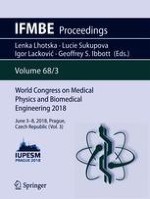2019 | OriginalPaper | Buchkapitel
Smart Tourniquet System for Military Use
verfasst von : Erdem Budak, Faruk Beytar, Aytekin Ünlü, Osman Eroğul
Erschienen in: World Congress on Medical Physics and Biomedical Engineering 2018
Verlag: Springer Singapore
Aktivieren Sie unsere intelligente Suche, um passende Fachinhalte oder Patente zu finden.
Wählen Sie Textabschnitte aus um mit Künstlicher Intelligenz passenden Patente zu finden. powered by
Markieren Sie Textabschnitte, um KI-gestützt weitere passende Inhalte zu finden. powered by
